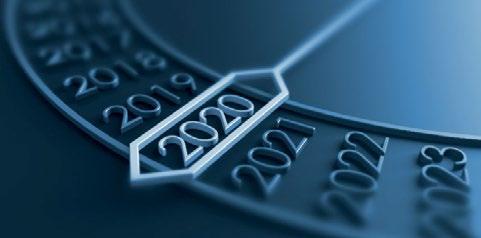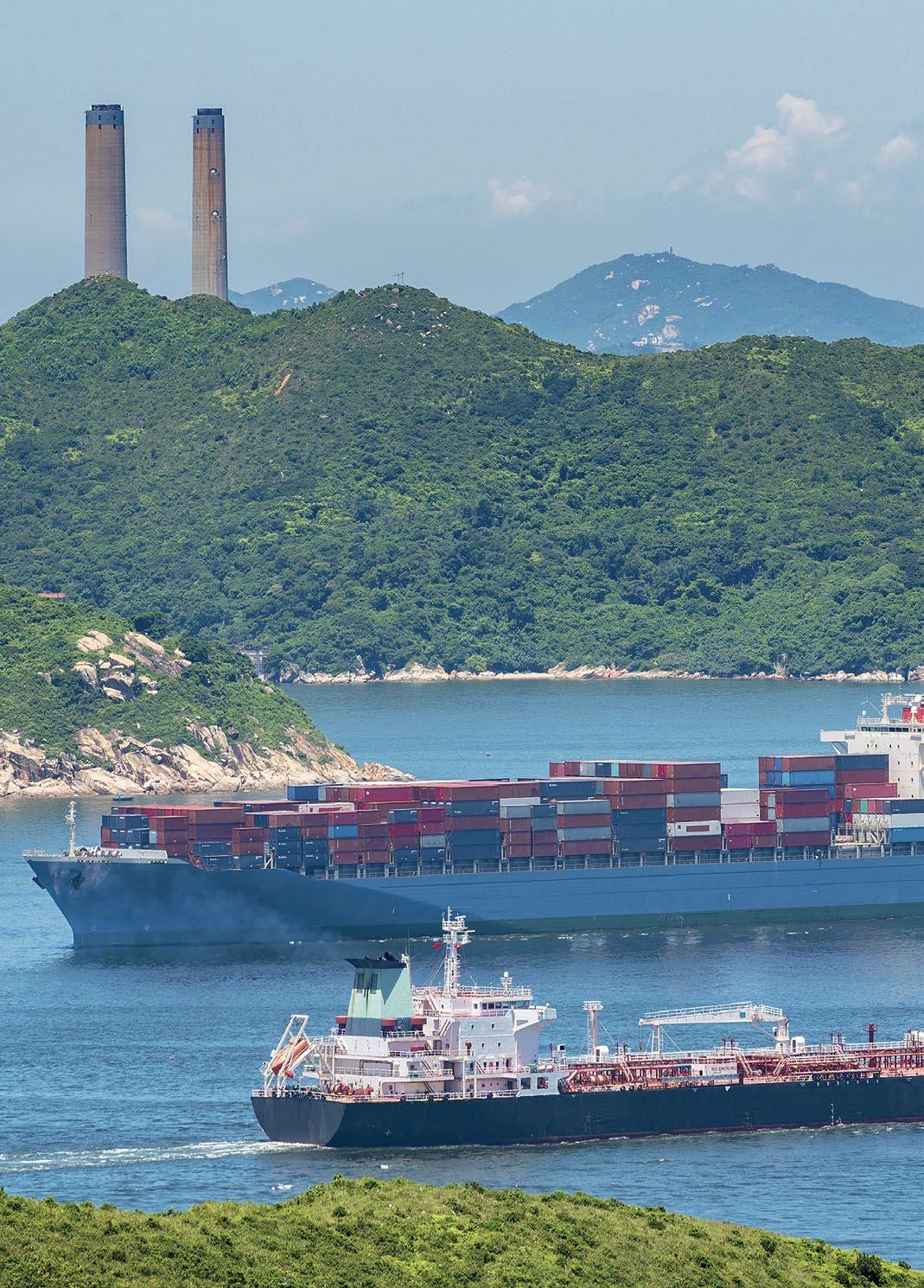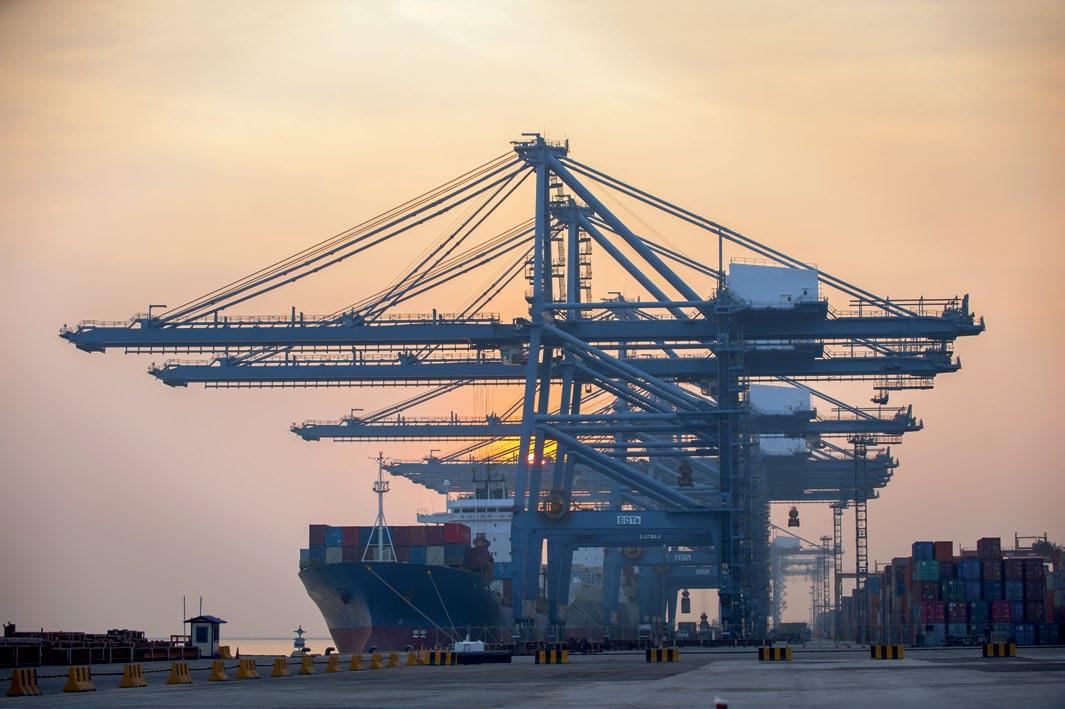
4 minute read
Exhaust Gas Cleaning Systems
With the International Maritime Organization (IMO) adoption of 0.50% global sulphur cap from 3.50% on the 1st January 2020 given as the effective date, 2019 was the year when the Shipping industry weighed the most appropriate options, from a wide variety of opinions provoked by the greatest regulatory and operational challenge, in order to ensure compliance and remain commercially sustainable, while managing risks ahead of the new regulations’ implementation. The limit in Sulphur Emission Control Areas (SECA) under MARPOL, remains unchanged to 0.10% effective since 1 January 2015.
As of March 1st 2020, the carriage of noncompliant fuel oil for combustion purposes for propulsion or operation onboard is banned, unless a vessel is fitted with an Exhaust gas cleaning system (also known as Scrubber), enabling it to achieve an equivalent method of compliance.
Advertisement
Open-loop scrubbers add seawater with naturally existing alkali to the exhaust gas, which turns sulphur oxides (SOx) to sulphates/sulphuric acid. Open-loop scrubbers return washwater to the sea. The discharged washwater must meet strict criteria, related to pH, PAHs (Polycyclic Aromatic Hydrocarbons), turbidity and nitrates. Some coastal states and ports have implemented local regulations with more stringent requirements that restrict or completely prohibit the discharge of washwater from open-loop scrubbers or prohibit the use of scrubbers. On the other hand, according to recent studies (ref. CE Delft) open-loop scrubbers appear to have a minimal effect of seawater quality in port. The reports will be presented to IMO for future work at evaluation and harmonization of rules and guidance on the discharge of washwater from EGCS into the aquatic environment, including conditions and areas. In the context of the continuous focus on positioning our fleet, Danaos R&D department, well ahead of the new global sulphur cap regulations, has studied during the previous years the main streams for compliance to decide on the most appropriate approaches for operation in the view of the new IMO regulations, which are either to switch to an alternative fuel or to invest in exhaust gas cleaning systems for our ships and continue using high sulphur fuel. The extensive study carried out during the previous years on EGCS systems and their operation, including risk assessment, investigated among others various contributing factors to a successful
retrofit, such as cost, safety/operation, complexity/configuration, availability, and enabled Danaos to conclude to the selection of STI Korean maker as a reliable partner for the installation of Open-loop Exhaust gas cleaning systems onboard 11 Danaos vessels, sized 6,500, 8,500, 9,600 and 13,100 TEUs, during 2019 and the first quarters of 2020.
Danaos R&D department, well ahead of the new global sulphur cap regulations, has studied the main streams for compliance to decide on the most appropriate approaches for operation in the view of the new IMO regulations.


The Open-loop multi-inlet inline scrubber units were custom designed and sized to suit the application of our vessels, according to the operational conditions, the expected exhaust gas flow and temperature, as well as the operational and machinery constraints, with the minimum modifications on the funnel structure and without any cargo capacity loss whatsoever. Danaos, always being a pioneer, successfully completed within only a few months the scrubber installation onboard the 1st “pilot” 6,500 TEU container ship at the end of Q1 2019, with the rest of the vessels following by implementing important design upgrades and improvements taken into consideration from the “pilot” vessel. The Open-loop multi-inlet inline scrubber units were custom designed and sized to suit the application of our vessels

Plan ApprovalMaker
Design RetrofitApproval RetrofitClass Approval Scheme B - CFD Approval Installation - trials
The various tasks of the very demanding and challenging retrofit projects included among others the plan approval with the maker to review the system’s drawings, the retrofit approval with vessels’ classification societies and clarification of certification procedure, the detailed review and approval of design Offices’ drawings and finally the cooperation with the shipyards in Korea and China, in order to ensure all the deliverables are timely received and all clarifications required for the proper installation/ fabrication are provided.
The issues experienced during the scrubber retrofit of the “pilot” vessel consisted a valuable feedback that Danaos gained and were carefully reviewed in order to be properly implemented in the following projects in terms of the necessary upgrades in design as well as the necessary developments & improvements. More specifically, the most significant upgrades implemented were related to pipe material specification, pipe size modification, improved system designs for degasification, update of CEMS sensor to withstand humidity, added dilution line to increase load in VGP areas, as well as upgrades in system’s automation.
Upon completion of scrubber systems’ installation onboard Danaos vessels, the scrubber data are collected online and sent to the Head Office. The Scrubber Monitoring is a feature that is custom designed in our Waves data analytics platform and provides the user with good insight on the scrubber operational data almost in real time, while at the same time one is able to easily confirm compliance with regulatory requirements for all parameters.












